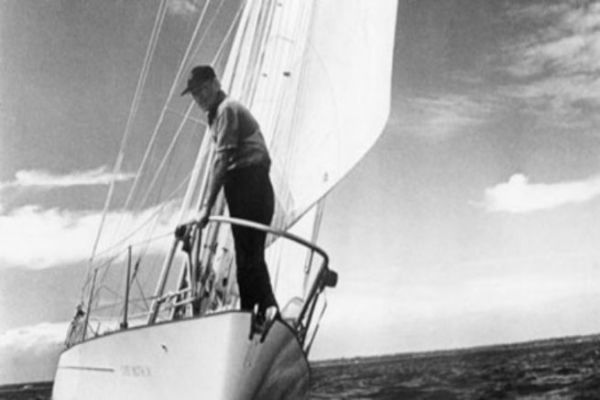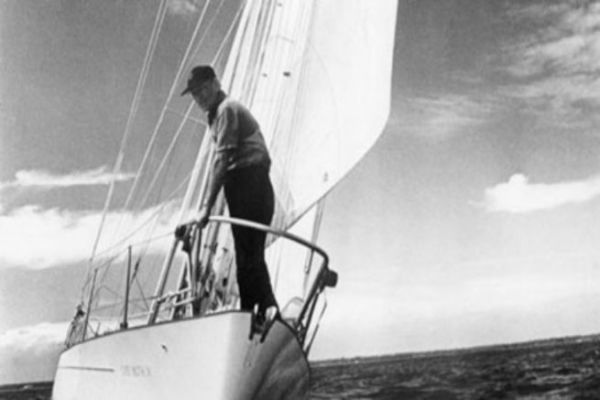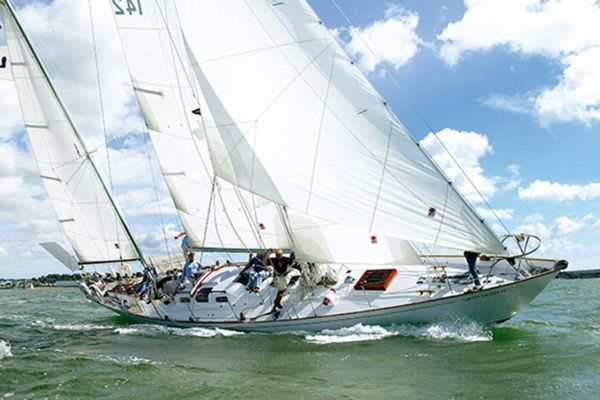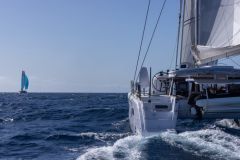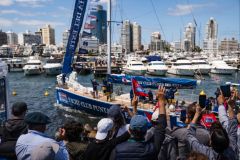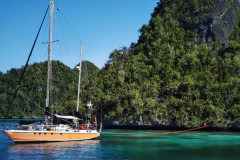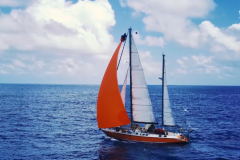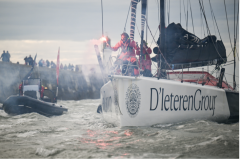Building a sailboat to beat the clipper record
After solo transatlantic races in 1960 and 1964, Sir Francis Chichester, inspired by the clippers of the 19th century, set himself the challenge of beating their records. Tea clippers took an average of 123 days to reach the East Indies. Chichester set himself the goal of sailing in 100 days.
In 1965, he ordered the construction of the Gypsy Moth IV from Gosport-based Camper and Nicholsons, to designs by John Illingworth and Angus Primrose. Launched in March 1966, with yard number 916, the Gypsy Moth IV measures 38 feet - 11.73 m - long at the waterline and 16 m overall. She is built with a cold-molded Honduran mahogany hull. The initial displacement was 10.4 tons, ballasted with an extra ton of ballast to cope with insufficient righting torque. Rigged as a ketch, she boasts a sail area of 79.3 m2 and a 140 m2 spinnaker. She is equipped for single-handed sailing, incorporating innovations such as a tiller-based autopilot system.
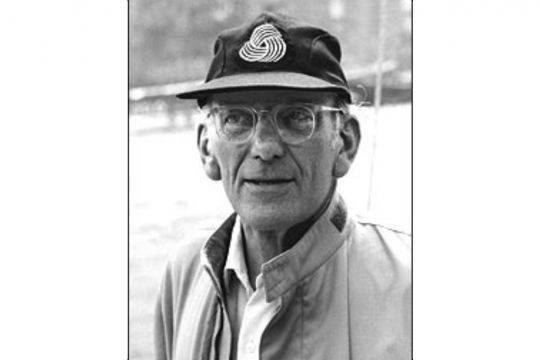
An adventure marked by many twists and turns
On August 27, 1966, the 64-year-old British sailor left Plymouth at 11 a.m., bound for Sydney. On November 15, still 2,300 miles from the capital of New South Wales, his autopilot failed. After 107 days and 14,113 miles, the navigator finally arrived in Sydney on December 12.
During the stopover, Sir Chichester called on America's Cup sailboat designer Warwick Hood, who added a part to the keel to improve stability, but to no avail.
He set sail again on January 29, 1967, rounded Cape Horn on March 22 and returned to Plymouth on May 28, 119 days after leaving Australia and having covered 15,517 miles. In all, the sailor covered more than 28,500 miles in just 274 days, including 226 days of actual sailing. He will have faced a number of setbacks, including a capsize at 140° - which the sailor calculated by measuring the mark on the cabin roof made by a wine bottle - 15 m-high waves and gusts in excess of 60 knots.
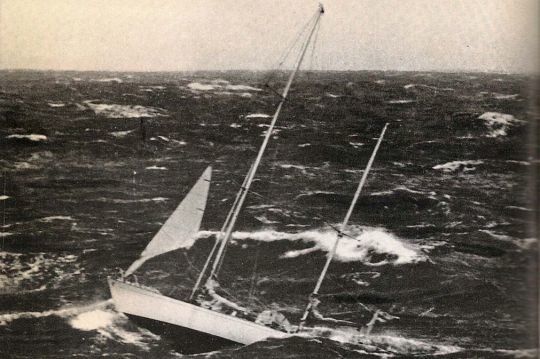
Rounding Cape Horn, an unforgettable memory
One of the most memorable anecdotes of his voyage was rounding Cape Horn on a 16-m sailing boat. Francis Chicester wrote in the book "Gipsy Moth Circles the World": "For years, it stuck in my mind. Not only did it scare me, it frightened me, but I think it's fair to say it terrified me. For a long time, I told myself that anyone trying to round the Horn on a small yacht must be mad. Of the eight yachts I knew to have attempted it, six had capsized or sanci'd, during or after the passage. I hate being afraid, but even more, I hate being prevented by fear. The Horn had a fearsome fascination and offered one of the world's greatest challenges."
Records galore
The Gipsy Moth IV made history in 1967, setting several records:
- The fastest circumnavigation ever carried out by a small ship,
- The longest non-stop navigation ever made by a small sailboat, 15,000 miles,
- The record for a week of solo racing over 1,000 miles achieved twice,
- The solo speed record, 1,400 miles in 8 days.
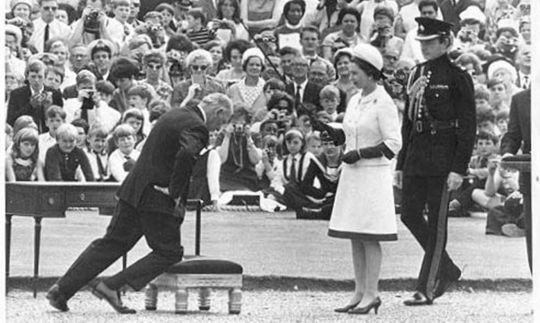
A disenchantment with Gipsy Moth IV
Sir Francis' voyage inspired thousands, and over 250,000 people attended his return to Plymouth on May 28, 1967. In early July 1967, he returned to the Thames with his wife, son and Commander Errol Bruce, and was knighted by the Queen at Greenwich on July 7.
On his return, however, he showed little regard for the boat on which he had completed his round-the-world voyage. He even confided in Life Magazine: "Now that I've finished, I don't know what will become of Gipsy Moth IV. I only own the stern, while my cousin owns two-thirds. I'd sell my share any day. It would be better if about a third was sawn off. The boat was too big for me. Gipsy Moth IV has no sentimental value for me. She's temperamental and difficult and needs a crew of three - a man to navigate, an elephant to move the tiller and a 1.1 m chimpanzee with 2.4 m long arms to move underneath and handle some of the equipment."
Chichester died on August 26, 1972 at the age of 71.

 /
/ 